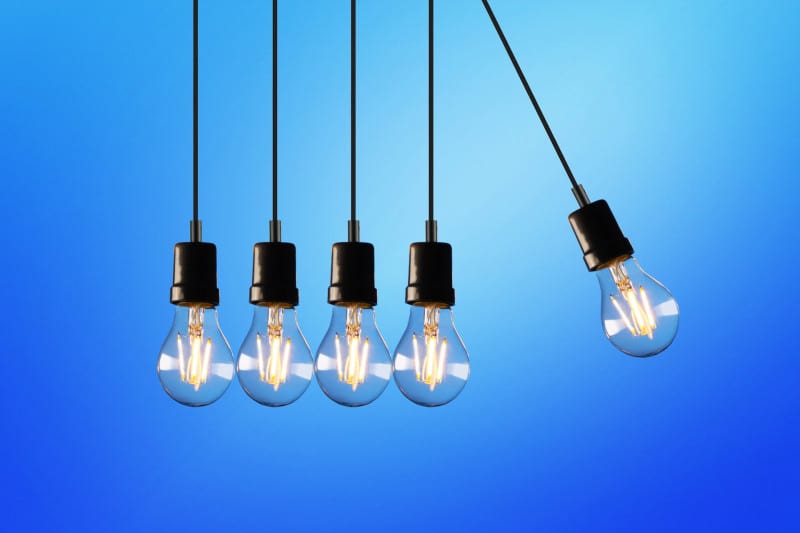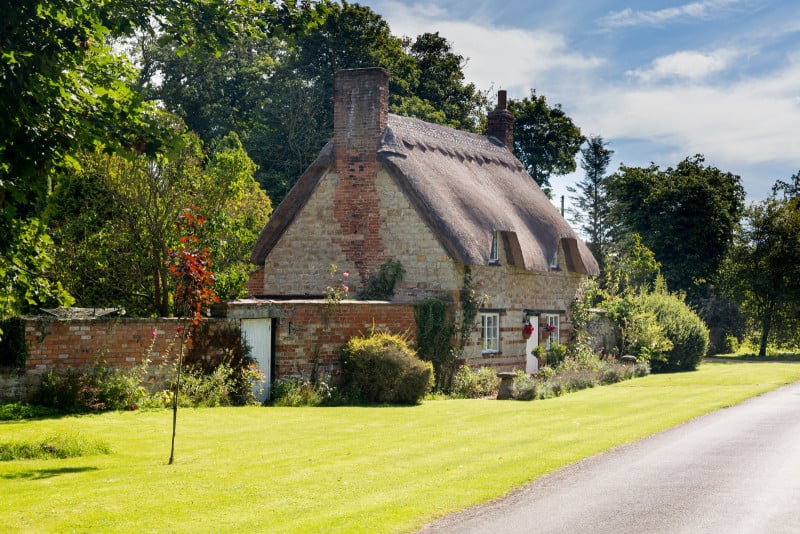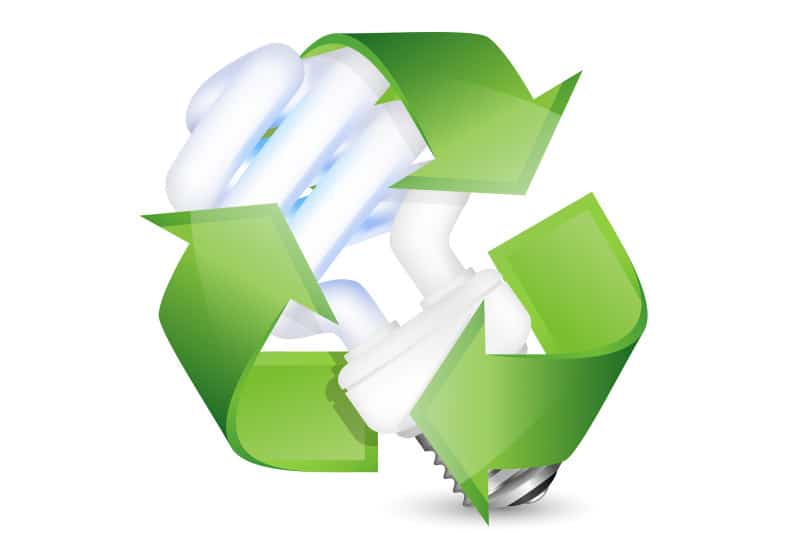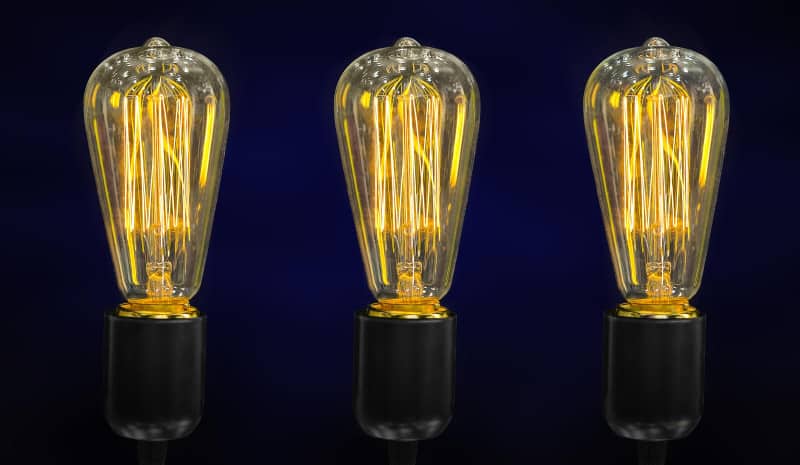If you’re like most people, you’re always looking for ways to save a bit of money and help the environment at the same time. One easy way to do both is by switching to energy-saving light bulbs. These bulbs use less electricity than traditional incandescent bulbs, which means you’ll see a lower energy bill each month.
Plus, they last longer, so you won’t have to replace them as often. But, here’s the question: are energy-saving light bulbs recyclable? After all, if they’re going to be better for the environment, it’s important to know what to do with them when they burn out.
The answer is a bit more complicated than a simple yes or no. While energy-saving light bulbs are technically recyclable, they contain a small amount of mercury, which is a toxic substance. We can’t just throw them in the regular recycling bin – we need to dispose of them properly to avoid any harm to the environment.
In this article, we’ll take a closer look at the recyclability of energy-saving light bulbs, how to dispose of them correctly, and even explore some alternatives to these bulbs. So, let’s flip that switch and shed some light on this important topic!
But first, let’s dive into what exactly energy-saving light bulbs are and how they work. Understanding the basics will help us better understand why recycling them is so important.
What Are Energy-Saving Light Bulbs
Let’s start with the basics: what exactly are energy-saving light bulbs?
You’ve probably seen them at your local hardware store or maybe even in your own home.
These bulbs, also known as compact fluorescent lamps (CFLs) or light-emitting diodes (LEDs), use less electricity than traditional incandescent bulbs.
How do they do this?
Well, unlike incandescent bulbs that produce light by heating a filament, energy-saving bulbs use a unique method.
CFLs work by using an electric current to excite a gas, which then produces ultraviolet light.
This ultraviolet light then interacts with a phosphorescent coating on the inside of the bulb, which creates visible light.
LEDs, on the other hand, use a semiconductor to produce light.
Both types of bulbs use significantly less electricity than incandescent bulbs, which means you’ll see a lower energy bill each month.
Plus, they last much longer, so you won’t have to replace them as often.
As well as being more energy-efficient, energy-saving light bulbs also come in a variety of shapes and sizes, making them incredibly versatile.
You can find them in everything from standard light bulb shapes to funky, decorative designs.
So, whether you’re looking to save money on your energy bill, reduce your carbon footprint, or just jazz up your home’s lighting, energy-saving light bulbs are definitely worth considering.
But what is it that makes them better for the environment?
That’s the question we’ll tackle in the next section.
Can You Recycle Energy-Saving Light Bulbs?
Now that we know what energy-saving light bulbs are, the question remains – can you actually recycle them?
The answer is yes, you can!
However, it’s important to note that you can’t recycle energy-saving light bulbs in the same way that you would recycle a plastic bottle or aluminum can.
Because these bulbs contain a small amount of mercury, they need to be disposed of properly to avoid any harm to the environment or human health.
It’s important to handle these bulbs carefully when recycling them.
Be sure to wrap them up in newspaper or another protective material before placing them in a recycling bin or taking them to a recycling center.
And, if you break an energy-saving light bulb, be sure to follow the proper cleanup procedures to avoid any exposure to the mercury inside.
Why Are Energy-Saving Light Bulbs Better for the Environment?
So, we know that energy-saving light bulbs use less electricity and last longer, but why are they better for the environment?
Well, it all comes down to carbon emissions.
When you use less electricity, you’re reducing the amount of carbon dioxide that’s released into the atmosphere.
This is because most electricity is generated by burning fossil fuels, which release carbon dioxide into the air.
By using energy-saving light bulbs, you’re reducing the amount of electricity you use, which reduces the amount of carbon dioxide that’s released into the atmosphere.
But that’s not the only way energy-saving light bulbs are better for the environment.
Because they last longer, you’ll have to replace them less often, which means less waste.
We can recycle them when they burn out, which further reduces waste.
Plus, because they use less energy, you’ll be reducing your overall carbon footprint.
It’s a win-win situation – you’ll be saving money on your energy bill and doing your part to help the environment.
So, if you haven’t already made the switch to energy-saving light bulbs, now is the time to do it.
Not only will you be doing your part to help the environment, but you’ll also be saving money in the long run.
In the next section, we’ll look at the major benefits of recycling energy-saving light bulbs.
What are the Benefits of Recycling Energy-Saving Light Bulbs?
Recycling is important for any type of waste, but it’s especially important with energy-saving light bulbs.
These bulbs contain a small amount of mercury, which is a toxic substance.
If they end up in a landfill, the mercury can leak out and pollute the soil and water. That’s why it’s so important to recycle energy-saving light bulbs instead of just throwing them in the trash.
So, what are the benefits of recycling energy-saving light bulbs?
To start with, it helps to keep the environment clean and safe.
By properly disposing of these bulbs, you’re preventing toxic substances from polluting the air, water, and soil.
Recycling these bulbs also helps to conserve natural resources.
When the materials in these bulbs are recycled, they can be used to make new products, which reduces the need to extract and process new raw materials.
This helps to conserve natural resources and reduce our overall environmental impact.
But what about the financial benefits of recycling energy-saving light bulbs?
Believe it or not, there are financial incentives for recycling these bulbs.
Some cities and states offer recycling programs that pay you for recycling energy-saving light bulbs.
Many home improvement stores and lighting retailers also offer recycling programs where you can bring in your old bulbs for recycling.
So, not only are you doing the right thing for the environment, but you might even make a bit of money while you’re at it.
In short, recycling energy-saving light bulbs is important for both the environment and our wallets.
By properly disposing of these bulbs, we can help to keep the environment clean and safe, conserve natural resources, while making a bit of cash.
So, the next time your energy-saving light bulbs burn out, be sure to recycle them!
How Should You Dispose of Energy-Saving Light Bulbs?
First and foremost, it’s important to note that energy-saving light bulbs should never be thrown in the regular trash.
As we’ve discussed, they contain a small amount of mercury, which is a toxic substance.
If you’re unable to recycle your energy-saving light bulbs, the best thing to do is to take them to a hazardous waste disposal facility.
Many cities and towns have these facilities, and they’re specifically designed to handle hazardous waste like energy-saving light bulbs.
You can find out where your nearest hazardous waste disposal facility is by checking with your local government.
It’s important to handle energy-saving light bulbs carefully, especially if they’ve burned out or broken.
Be sure to wrap them up in a newspaper or another protective material before transporting them to a hazardous waste facility.
And, if you happen to break a bulb, be sure to follow the proper cleanup procedures to avoid any exposure to the mercury inside.
This might include opening a window, leaving the room for a few minutes, and using a damp cloth to clean up the broken glass and debris.
By disposing of these bulbs properly, you’ll be doing your part to keep the environment clean and safe.
What Happens if You Don’t Recycle Energy-Saving Light Bulbs?
We’ve talked a lot about the importance of recycling energy-saving light bulbs, but what happens if you don’t recycle them?
Unfortunately, the consequences can be pretty serious.
As we’ve mentioned, energy-saving light bulbs contain a small amount of mercury, which is a toxic substance.
If these bulbs are thrown in the regular trash, they can end up in landfills where the mercury can leak out and contaminate the soil and water.
This can have serious consequences for both the environment and human health.
Mercury is a potent neurotoxin, which means it can cause damage to the brain, spinal cord, and nervous system.
It’s especially harmful to young children and pregnant women.
In addition to the health risks, failing to recycle energy-saving light bulbs also means that valuable resources are being wasted.
When these bulbs are recycled, the materials can be used to make new products, which reduces the need to extract and process new raw materials.
This helps to conserve natural resources and reduce our overall environmental impact.
So, the bottom line is this – it’s incredibly important to recycle energy-saving light bulbs.
By doing so, you’re not only keeping the environment clean and safe, but you’re also protecting human health and conserving natural resources.
Conclusion
Energy-saving light bulbs are a fantastic investment for your wallet and the environment.
They come in various sizes and shapes, and last longer than the traditional bulbs.
Although they are technically recyclable, they require proper disposal due to the small amount of mercury they contain.
That’s why recycling them is crucial to prevent toxic mercury from contaminating our landfills and reduce waste.
By switching to energy-saving bulbs and recycling them correctly, you are playing a significant role in creating a cleaner and healthier environment for all.
Not only will you save money, but you’ll also be making a positive impact on the planet.
So, let’s do our part and make the switch to energy-saving bulbs while properly recycling them.
It’s a win-win situation!







